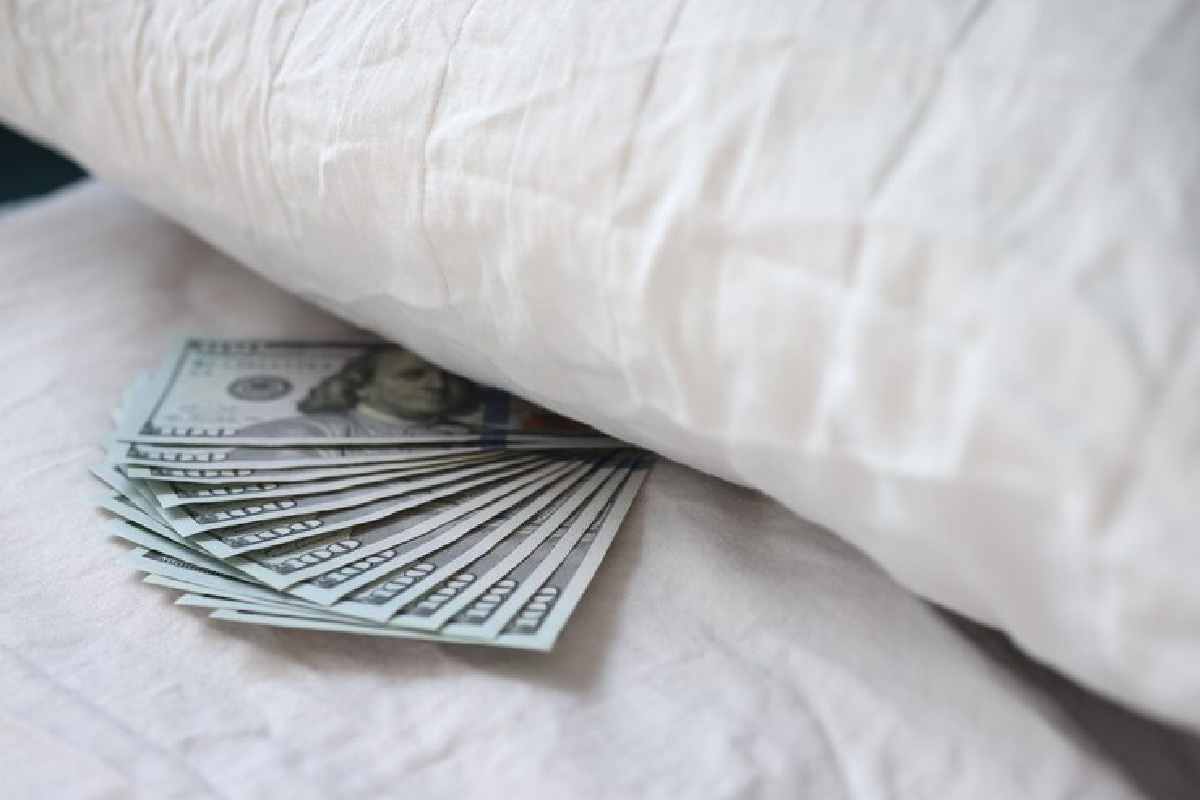When a debtor files for bankruptcy, they do not have to give up all their property and assets. The U.S. Bankruptcy Code contains a series of exemptions for different types of property that a debtor can keep when they file for bankruptcy. See 11 U.S.C. § 522. The property covered by these exemptions are referred to as “exempt.” In other words, there are specific rules regarding what assets a debtor can keep when filing for bankruptcy. The idea behind enabling debtors to claim exemptions when filing for bankruptcy is to allow them to keep the assets that they may need the most to take full advantage of a fresh financial start.
Many states opted out from the federal exemptions in the bankruptcy code and provide exemptions under state law that must be used when a debtor files for bankruptcy. Only 19 states (plus the District of Columbia) allow debtors to use the Federal exemptions in the Bankruptcy Code. New York had previously opted out of the Federal exemptions, but on Christmas Eve in 2010, New York opted in. Before leaving office, Governor David A. Paterson signed into law s. 7034-A / A08735A, which increased the amount of various state law bankruptcy exemptions available to debtors and gave debtors the option to choose between state exemptions and the Federal bankruptcy exemptions. When filing for bankruptcy, if a debtor has the option to select either state or federal exemptions, they must choose one set. They cannot combine or mix exemptions between the two sets. Below please find some of the most important Federal exemptions in the Bankruptcy Code.
The “Wildcard” Exemption
The Federal wildcard exemption is $1,475 plus $13,950 of any unused portion of the homestead exemption that is available to apply as an exemption to any property of the debtor’s choosing. This is perhaps the most beneficial federal bankruptcy exemption and enables debtors to protect many important assets that may not otherwise be protected and previously could not be. More specifically, it means that if a debtor is not protecting any real property in which they live, they can protect anything up to a $15,425 in value or combination thereof. (e.g., cash, a personal injury award, a pending tax refund, excess equity in a car, jewelry, stocks, bonds, electronics, or other valuables).
The wildcard exemption has enabled New York debtors to protect many assets that are non-exempt under the New York state exemptions. Two important examples of this are a pending tax refund and money in the bank. For example, if a debtor has $3,000 in the bank and a pending $11,000 tax refund, they can protect both and have $1,425 in a remaining wildcard exemption to apply to another asset or assets. Prior to the enactment of s. 7034-A / A08735A, bankruptcy trustees would regularly require debtors to turn over anticipated tax refunds and/or money in the bank since the prior New York wildcard limit was only $1,000. Being able to use the Federal wildcard exemption provides an enormous benefit for New York debtors. In addition, being able to apply it or spread it out over many otherwise unprotected assets, gives bankruptcy lawyers a great tool in the toolbox when claiming exemptions in a bankruptcy petition.
Homestead Exemption
A debtor can protect just $27,900 of equity in a principal residence and must live in the home to exert the homestead exemption. Please note, in New York, the bankruptcy homestead exemption under state law is much larger and allows a debtor to protect significantly more equity in their home. For example, in New York City and the surrounding counties, the New York Homestead exemption for an individual debtor is $179,950, an amount almost six and a half times larger than the Federal Homestead exemption.
Personal Property
A debtor can protect the following personal property using the Federal exemptions:
$4,450 of equity in one motor vehicle.
$1,875 for jewelry.
$700 per individual item with a $14,875 aggregate value on household goods, furnishings, appliances, clothes, books, animals, crops, musical instruments.
$2,800 for tools of the trade, including implements and books.
$14,875 in unmatured life insurance cash value.
Remember, if a debtor is not using the federal homestead exemption, they can use the wildcard exemption to protect additional equity in any of the property listed above. For example, if a debtor’s car has $8,000.00 in equity, they can protect the $3,550.00 that is not covered by the $4,550.00 motor vehicle exemption. They would then have $11,875.00 of the wildcard remaining to apply to other assets.
Domestic Support and Public Benefits
A debtor can protect all Social Security benefits, workers compensation, unemployment benefits, veteran’s benefits, public assistance, and disability or illness benefits, as well as spousal support or child support that is reasonably needed for support. Additionally, life insurance payments required for support, or for dependents are also protected.
Personal Injury Claims
A debtor can protect up to $27,900 of the net proceeds of an award or settlement for a personal injury claim using the Federal exemptions. This exemption can be combined with the wildcard exemption to protect up to $43,325 of a personal injury award or settlement. A debtor can also protect any award for the loss of future earnings needed for support. Additionally, a debtor can protect any recovery for the wrongful death of the person relied on for support, and all compensation received due to being a crime victim.
For example, if a debtor is receiving a personal injury award of $30,000, this would be fully protected by combining the personal injury exemption with $2,100 of the wildcard exemption. Even if they were receiving a $44,000 award and combined the personal injury exemption with the maximum amount of the wildcard, the Trustee would most likely abandon the asset as there would be no meaningful benefit to the bankruptcy estate.
Retirement Accounts
A debtor can protect all tax-qualified retirement accounts. This includes tax exempt retirement accounts, such as 401(k)s, 403(b)s, 457s, profit-sharing and money purchase plans, SEP and SIMPLE IRAs, and defined benefit plans. There are limits for certain simple IRAs, Roth IRAs, and pensions above $1,512,350.
New York’s state law for bankruptcy exemptions contained in the New York Civil Practice Law and Rules (CPLR) and Debtor and Creditor Law (DCL) have many similarities to the Federal exemptions, but there are a few key differences. First, there is only a small wildcard of $1,175 that can only be used if a debtor is not protecting real estate. See CPLR § 5205 (a) (9). Second, the New York homestead exemption is more than six times greater than the Federal homestead exemption. As a result, most homeowners use the New York exemptions and therefore have no access to the generous and flexible Federal wildcard exemption. Finally, the personal injury exemption is substantially smaller than the corresponding Federal exemption. Please compare the Federal exemptions above with these examples of New York State exemptions:
New York Homestead Exemption
The homestead exemption (CPLR § 5206) can only protect equity in a residence in which a debtor lives. In New York, a debtor can protect the equity in a house, condominium, co-op, or mobile home used as their primary residence.
$179,950 in Kings, Queens, New York, Bronx, Richmond, Nassau, Suffolk, Rockland, Westchester, and Putnam counties.
$149,975 in Dutchess, Albany, Columbia, Orange, Saratoga, and Ulster counties, and
$89,975 in all remaining counties.
Personal Property
Under CPLR § 5205, a debtor can protect the following personal property.
$4,825 in value in a vehicle.
A debtor can protect up to $11,975 of the following items under:
Stoves and heating equipment for use in a debtor’s home and fuel for 120 days; sewing machine, religious texts, family photos and portraits, school books; other books up to $600 in value; domestic animals and food for a debtor and their family for 120 days up to $1,175 per person; clothing, furniture, refrigerator, radio, television, computer, cell phone, kitchenware, prescribed health aids; wedding ring; watch, jewelry or art up to $1,175 in individual value.
Tools necessary for a profession up to $3,575 in value.
Security deposits held for rental real estate or utilities.
Service animals.
New York State college choice tuition savings program trust fund payments (also known as 529b accounts) for the benefit of a minor or up to $11,375 of value if the debtor owns the account.
The full cash surrender value of insurance policies.
Domestic Support and Public Benefits
New York’ DCL § 282 allows a debtor to protect a wide variety of public benefits including: Social Security benefits, unemployment benefits, veteran’s benefits, public assistance, disability or illness benefits, crime victim’s reparations law benefits, local public assistance, and workers’ compensation. Court-ordered alimony, maintenance or child support to the extent reasonably needed for support are also protected by New York exemptions.
Personal Injury Claims
In New York, a debtor can only protect up to $9,000 pursuant to DCL § 282 for damages for a personal injury claim.
Lost future earnings that compensate a debtor or someone upon whom a debtor depended on for support are protected. Additionally, compensation for the wrongful death of someone the debtor relied on for support are also protected. These exemptions are restricted to an amount reasonably necessary to support a debtor and their dependents.
Retirement Accounts
Most Tax-exempt pensions and retirement accounts are exempt under New York law.
New York Wildcard Exemption
A modest wildcard exemption protects any property (except real estate) up to a value of $1,175 provided that the debtor does not use the homestead exemption. Since most New York debtors would only use the New York exemptions if they had real estate with equity above the Federal exemption to protect, this wildcard exemption is rarely used.
Wages and Income
A debtor can protect 90% of income received within 60 days before filing bankruptcy or 100% of pay to a noncommissioned officer, private, or musician in the armed forces.
Contact the Law Offices of David I Pankin, P.C.
Based on the many assets a debtor can potentially keep when filing for bankruptcy, it is clear that the purpose of the exemptions in bankruptcy is to enable debtors to retain the assets that they may need in order to better achieve a successful fresh start upon receiving their bankruptcy discharge. It also is a great reason to pursue bankruptcy relief as opposed to paying creditors back through debt settlement or credit counseling programs or withdrawing money from retirement plans to pay off outstanding debt. If you have any questions about bankruptcy, or any questions about property that may be protected when filing for bankruptcy, please contact the Law Offices of David I. Pankin, P.C. by calling 888-529-9600 or use our easy online contact form. Contact us today to schedule a free consultation.






